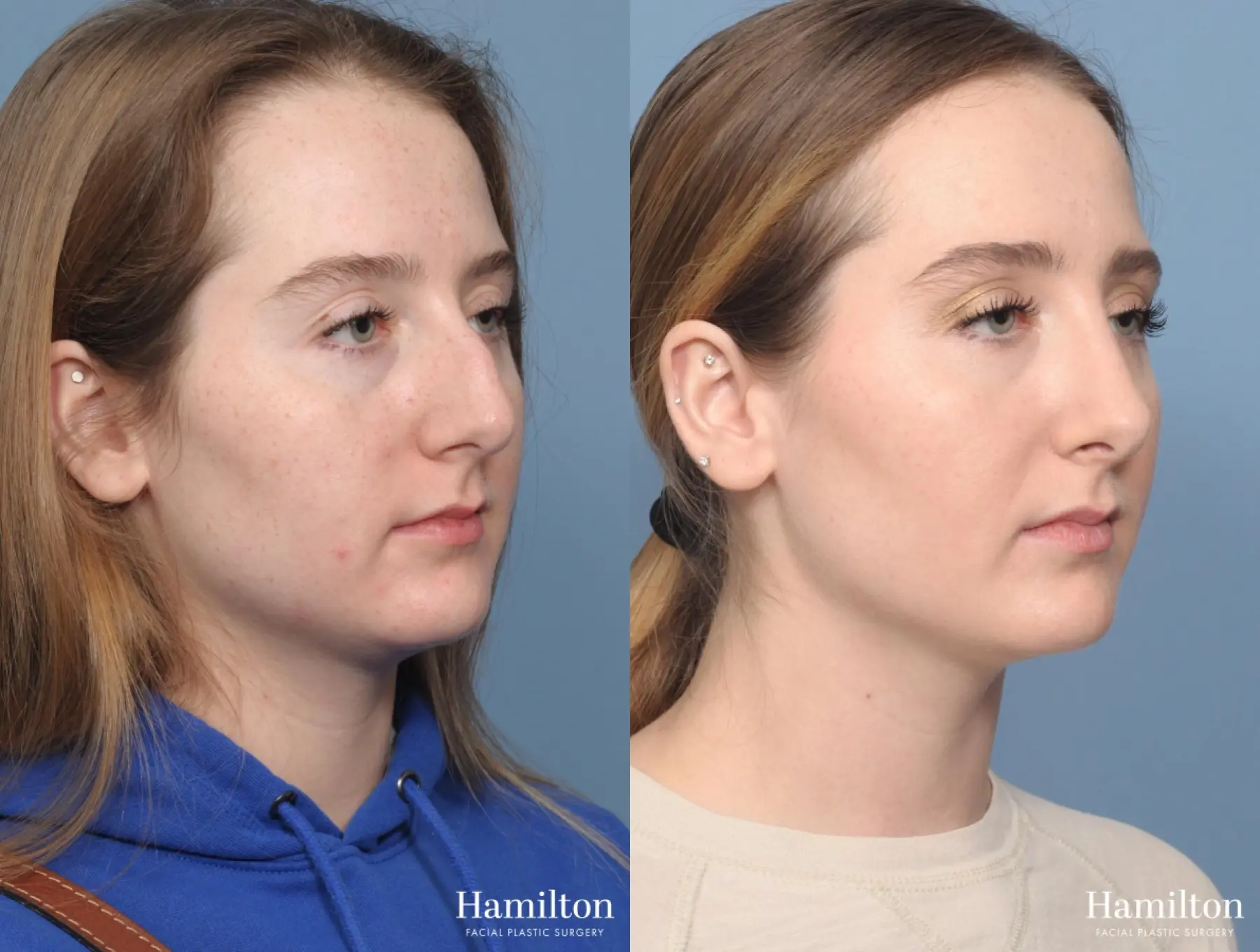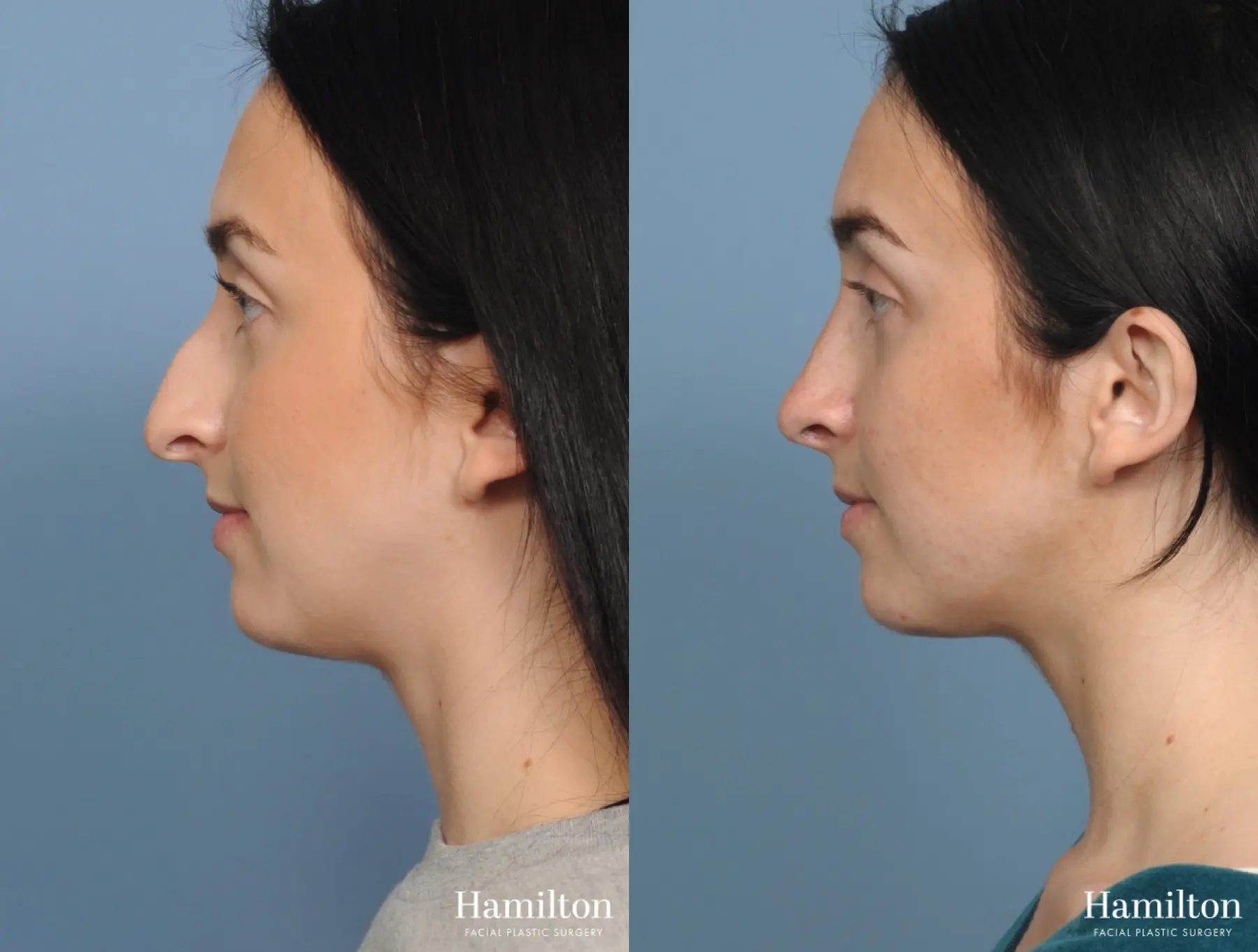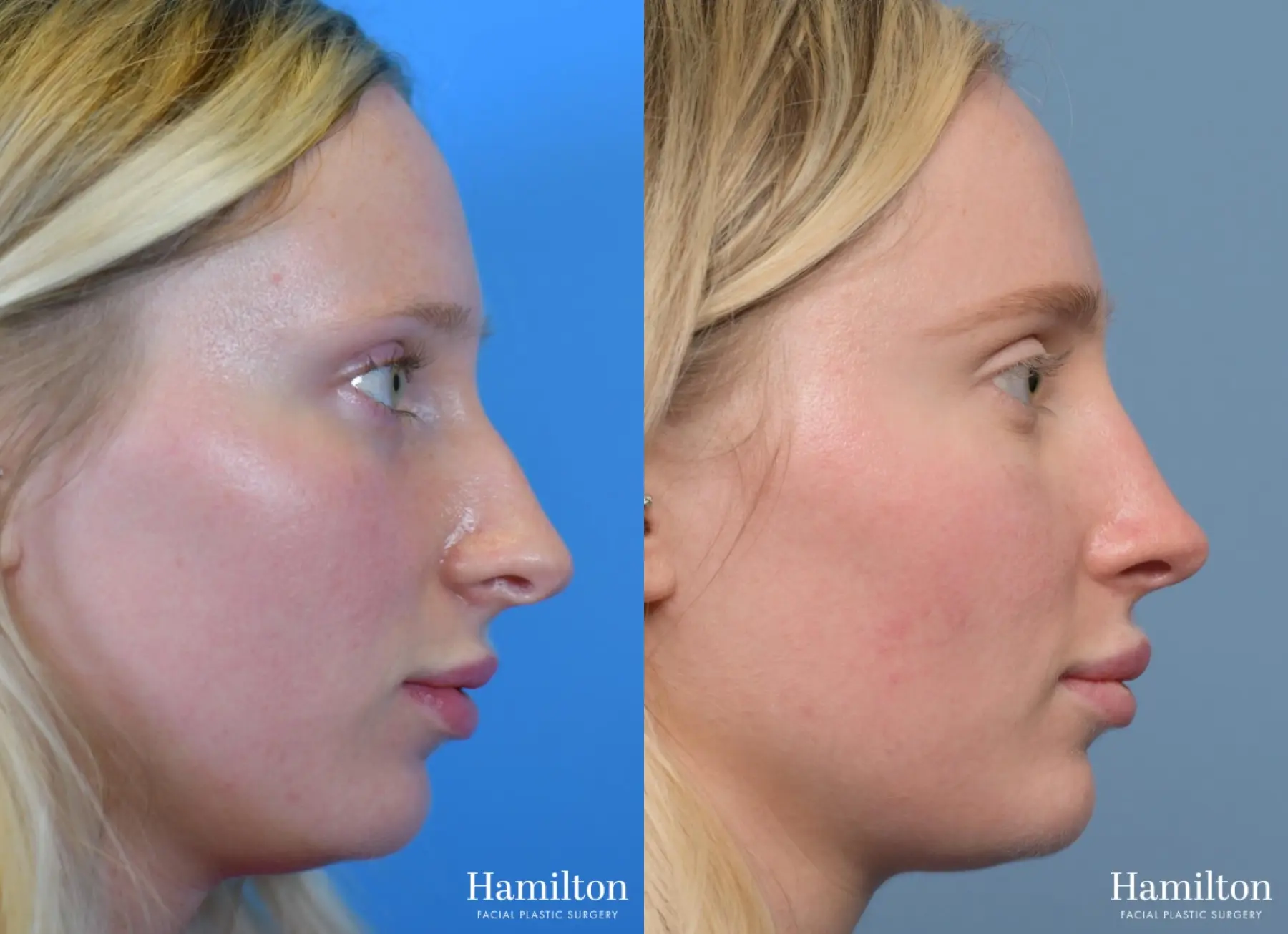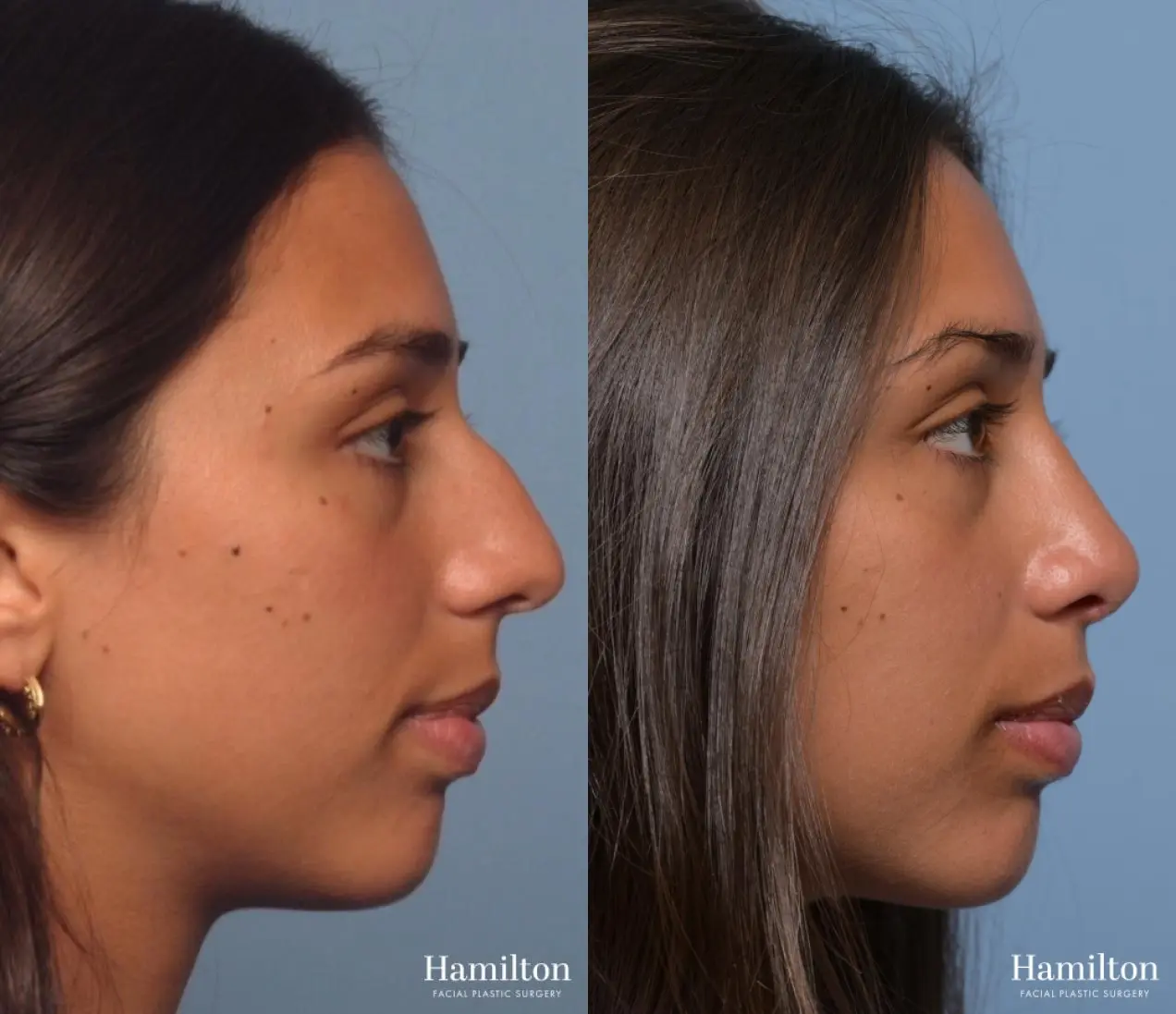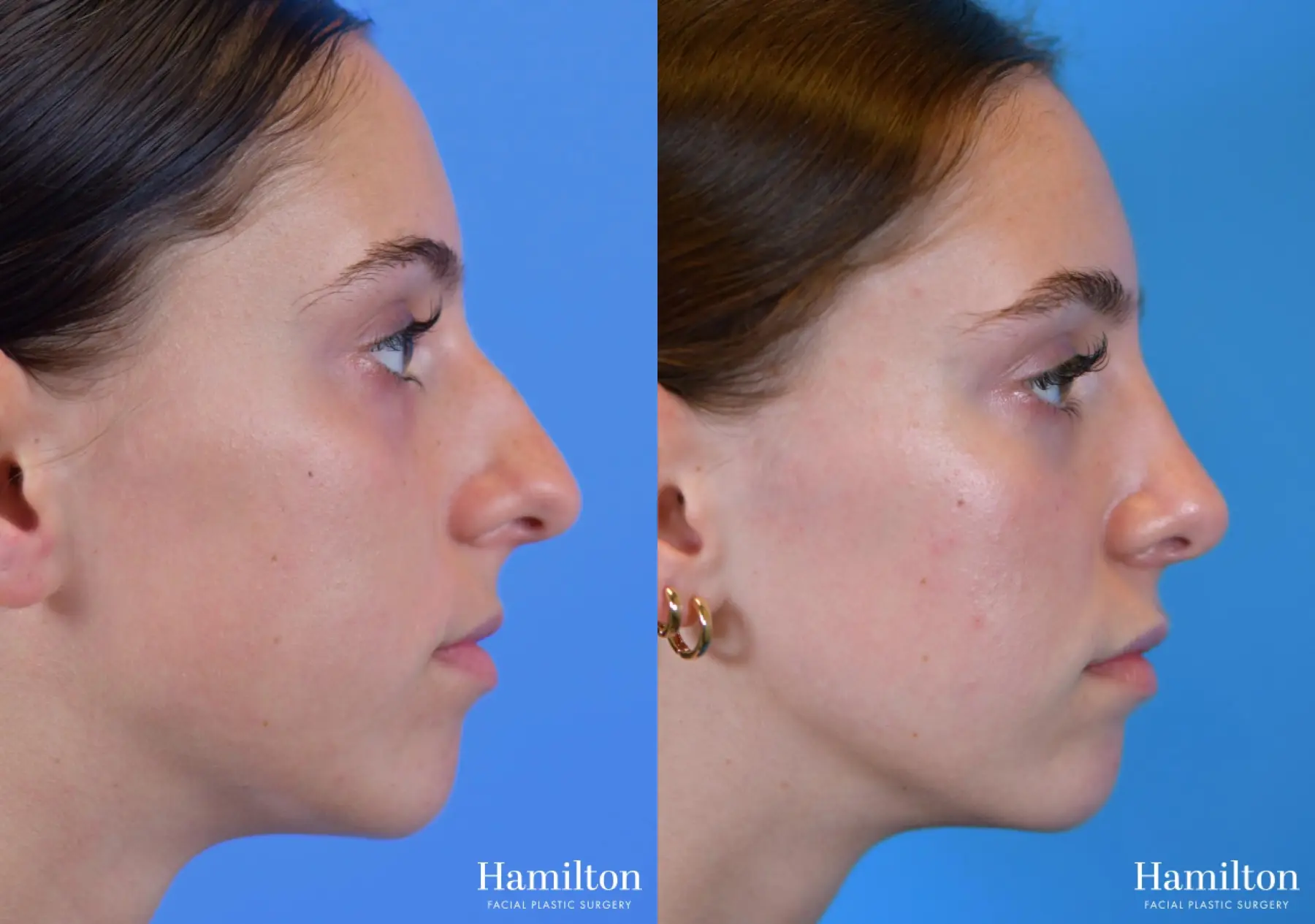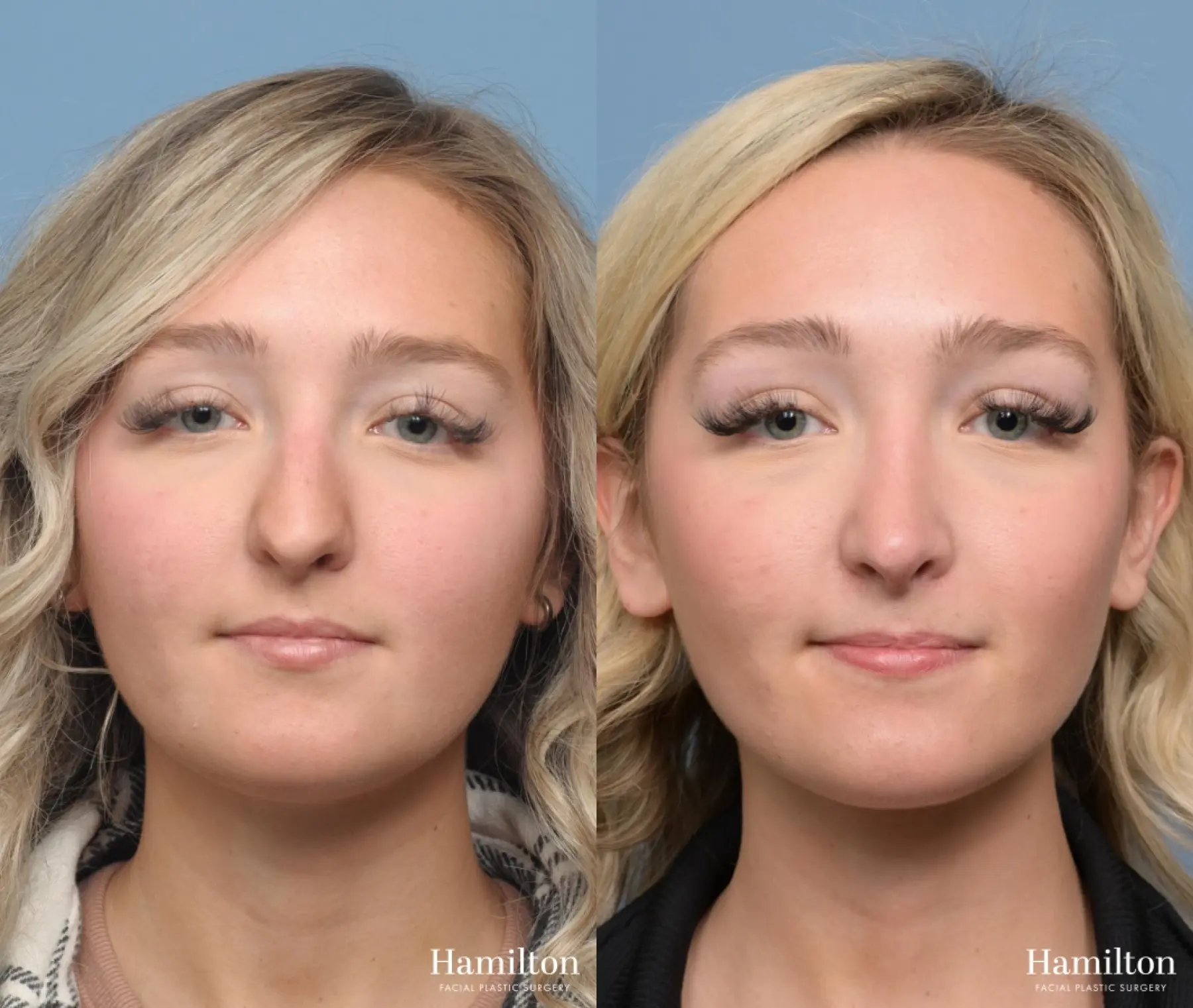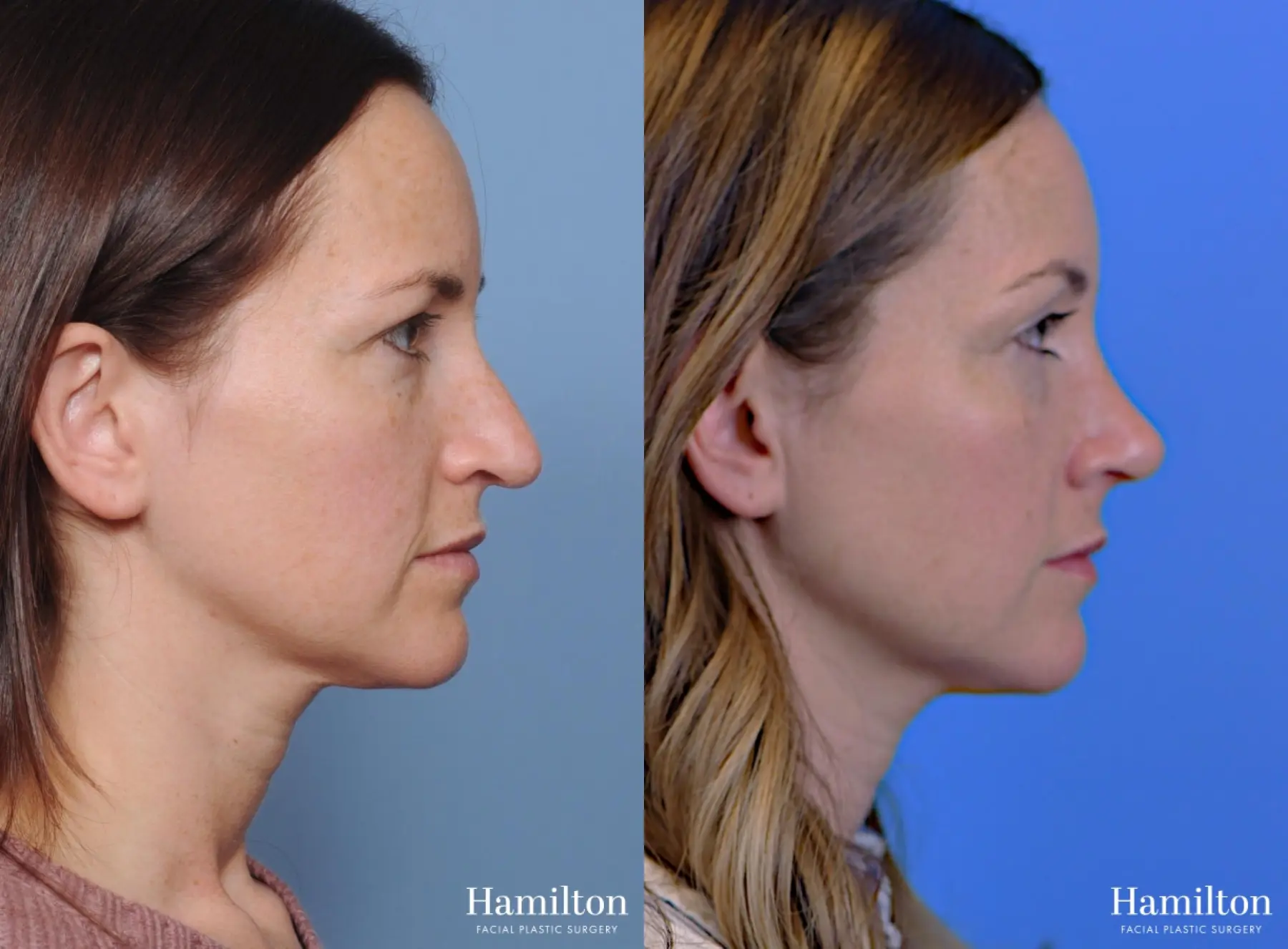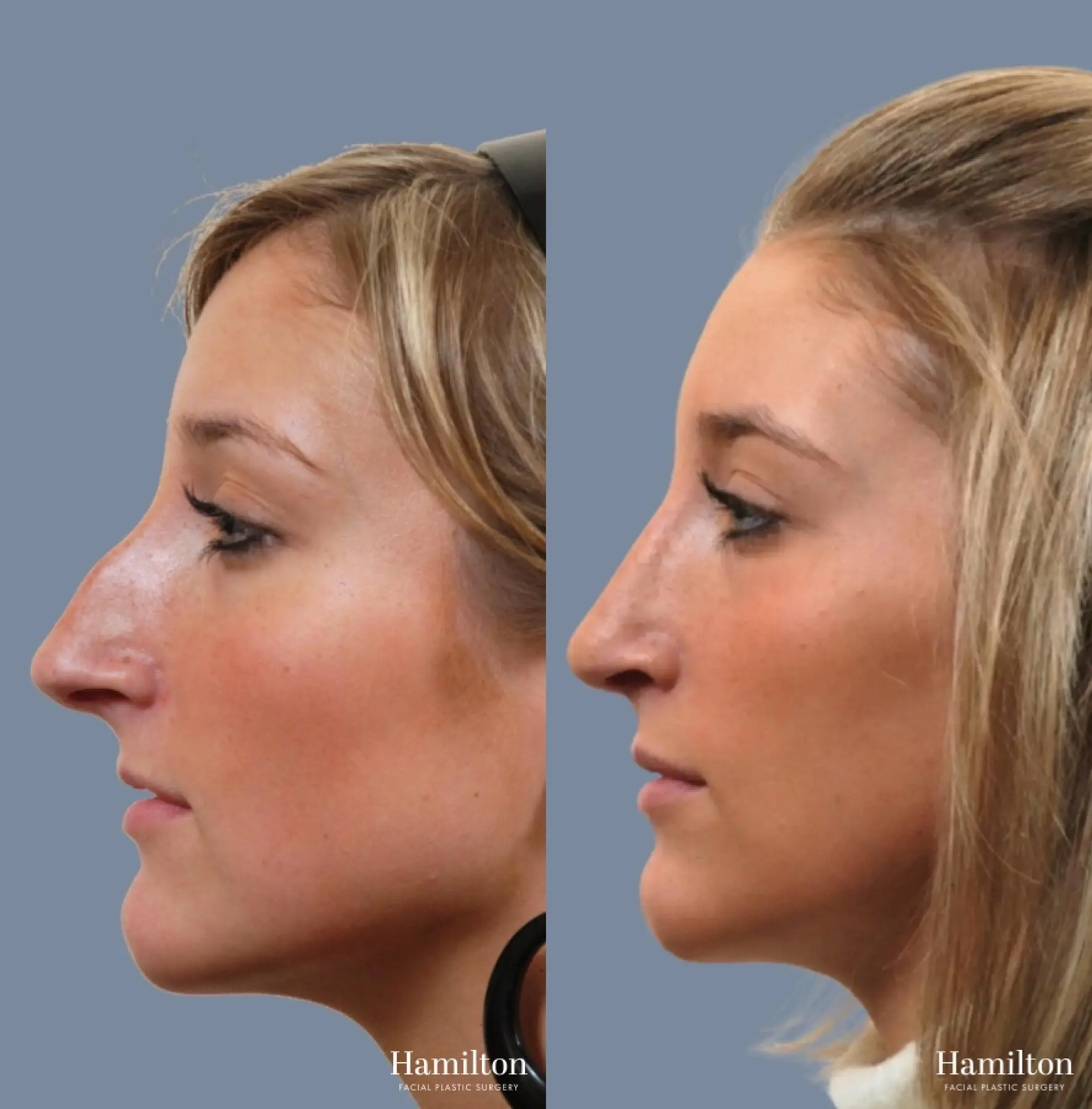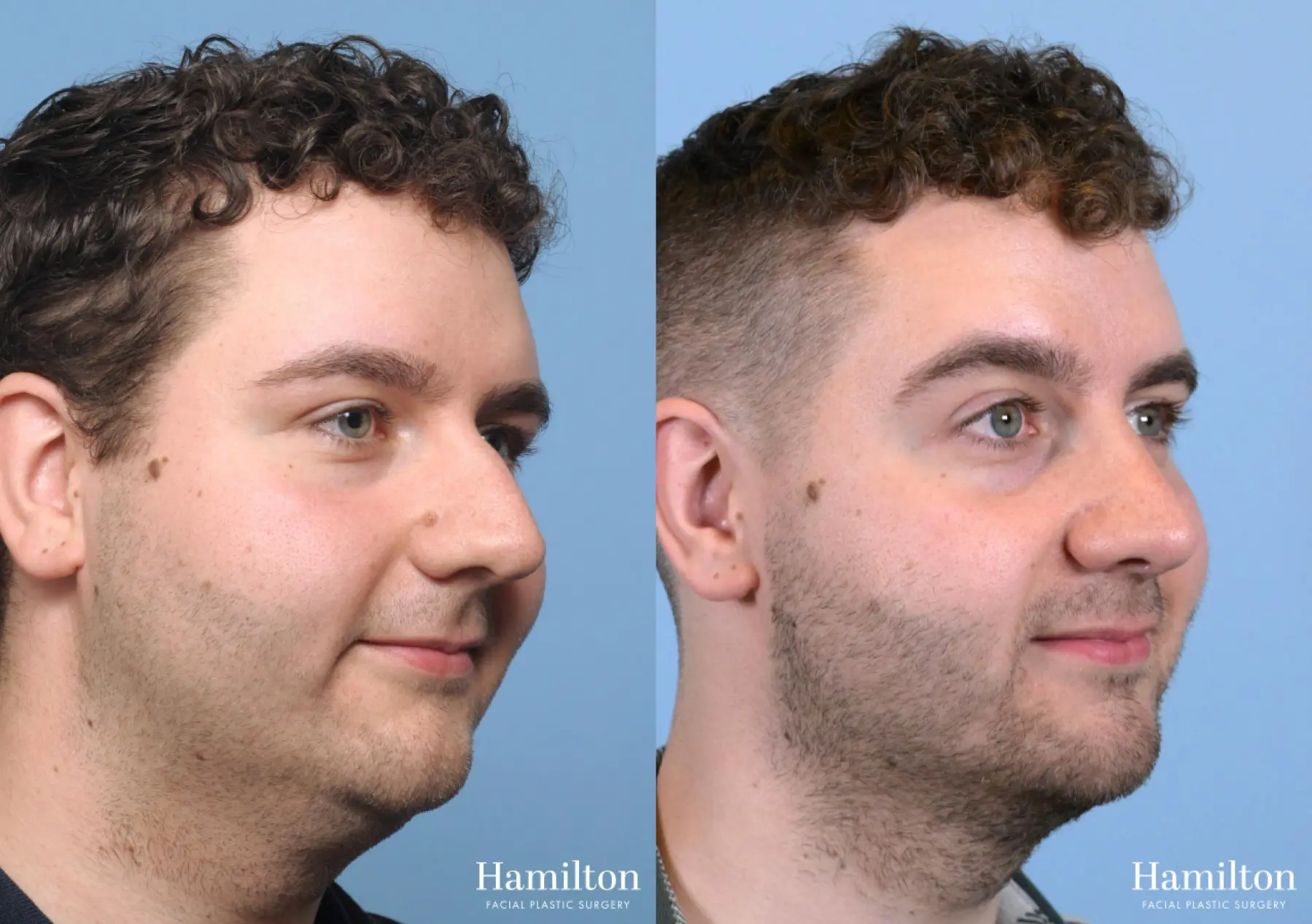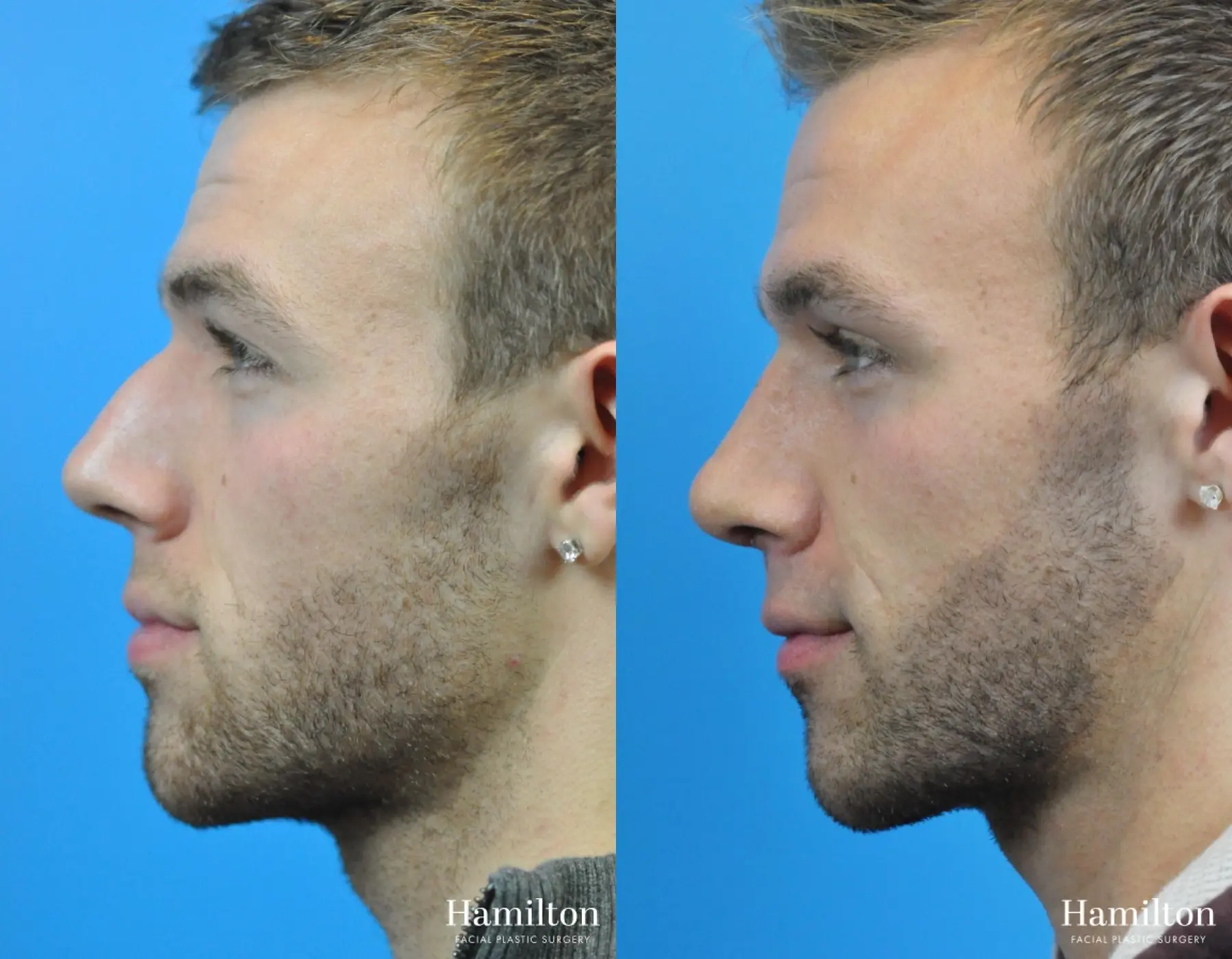Rhinoplasty in Indianapolis, Indiana
Located in Carmel and Greenwood, Hamilton Facial Plastic Surgery, led by double board-certified facial plastic surgeon Mark M. Hamilton, M.D., F.A.C.S., offers rhinoplasty for men and women who live in and around Indianapolis, Indiana. Rhinoplasty can help create a better balance between the features of the face and can be performed for functional purposes, such as to correct a deviated septum, or for cosmetic purposes including, a bump on the bridge of the nose, wide nostrils, a bulbous tip or a “hooked” nose.
What Is Rhinoplasty?
Rhinoplasty, also known as surgery on the nose, is one of the most common plastic surgery procedures performed. With rhinoplasty, it is possible to increase or decrease the overall size of the nose, remove a hump, alter the tip of the nose or the bridge of the nose, decrease the nostril width or change the angle between the nose and upper lip. These changes can create a better balance between the facial features.
How Much Does Rhinoplasty Cost in Indianapolis?
Hamilton Facial Plastic Surgery seeks to make facial surgery procedures available and affordable for everyone. To accomplish this, we accept cash, major credit cards and personal checks for rhinoplasty.
When Is The Best Time For Rhinoplasty?
Summer is a common time for nose surgery for a variety of reasons. Younger patients have time off for the summer allowing elective procedures. Nasal trauma more often occurs with outdoor activities requiring correction. Whether reconstructive or cosmetic, nasal surgery can improve your breathing, as well as your appearance.
Rhinoplasty Candidates
Cosmetic rhinoplasty involves reshaping the nose to better fit the face. This can involve making the nose larger or smaller, taking down a nasal hump, making the tip smaller or changing the size and shape of the nostrils. What is done during the procedure depends on your anatomy and goals and your physician’s evaluation. Prospective patients should wait until they are fully grown to have surgery, which is typically around 17 for females, 18 for males.
Repair of nasal trauma can involve correction of deformities of the nose due to trauma, as well as straightening the inside and out to improve breathing. Some of the same techniques that are utilized in cosmetic nasal surgery are used for correction of nasal and septal fractures.
Lastly, nasal surgery can be done to correct breathing. This may involve just straightening the septum (wall inside the nose that separates the two nostrils and their airways) or building up the structure and support of the nose (think internal breathe right strip) for better breathing. Like nasal trauma, insurance can often help with functional nasal surgery.
What to Consider when Planning your Rhinoplasty Consultation
Before and After Pictures
What to Expect During Rhinoplasty Surgery
Incisions are made either inside of the nose or both inside of the nose and one small one under the tip of the nose. The skin is then separated from the underlying bone and cartilage, which is then sculpted to the desired shape. The skin is redraped over the new framework, and the incisions are closed. Surgery usually takes about two to three hours and is done on an outpatient basis. Patients will have tape and a splint on the nose for the first week.
After Rhinoplasty
There are some restrictions after nasal surgery. Patients are required to refrain from strenuous activities for two weeks and heavy lifting for three weeks. In addition, patients should not be involved in any contact sports or activities which may involve trauma to the nose for six weeks. While much of what has been corrected can be visualized after a couple of weeks, the nose requires a full year before the final result can be appreciated.
Deciding if nasal surgery is right for you begins with a consultation. Video imaging (using computer photography to estimate the final result) can be very helpful for patients to understand their possible result and to make sure they are on the same page as their surgeon. With successful nasal surgery, patients can both breathe better and achieve the look they’ve always wanted.
Post Operative Rhinoplasty Instructions
Introduction
The following is a list of general instructions for your care following surgery. Please read them carefully several times as most of your questions should be answered here. Instructions for your care will also be reviewed the morning after surgery. Carefully following these instructions should help you get the best results from your surgery.
After Surgery
Daily Care
This care will be reviewed the morning following your surgery:
- Go over suture lines inside the nose three times daily with hydrogen peroxide on a Q-tip. After this again with a Q-tip apply a liberal amount of Vaseline ointment. The stitches inside the nose are dissolvable and keeping them lubricated helps quicken the process.
- You may shower the second day following surgery, but it is important to keep the tape and splint on your nose dry at all times. Baths are a better choice for most people. Be sure to use a gentle shampoo such as Johnsons Baby Shampoo.
- Be sure to report immediately any signs of bleeding that persist for more than ten minutes, infection, redness, fever, unusual drainage, or pain.
- Stitches, if present, will be removed the seventh day after surgery.
- Following removal of the tape and splint, you will need to gently wash your nose twice a day two help reduce oiliness.
What to expect
Restrictions
- No strenuous exercise for at least two weeks.
- No heavy lifting for three weeks.
- No pull-over clothing for two weeks.
- Avoid hard chewing foods for two weeks.
- Avoid yawning or wide mouth opening for two weeks.
- Avoid nose blowing or sniffing through the nose for two weeks.
- Use a baby toothbrush on the upper teeth for two weeks following surgery.
- If sneezing, sneeze with the mouth open for two weeks.
- No driving for one, preferably two weeks after surgery.
- No contact sports for six weeks.
Finally
The healing time for nasal surgery is often less than expected and the results are worth the wait. While swelling should be completely gone after four to six weeks, your healing will continue for the entire first year. I will follow you through this entire process, but be patient.
Please do not hesitate to ever contact our office.

